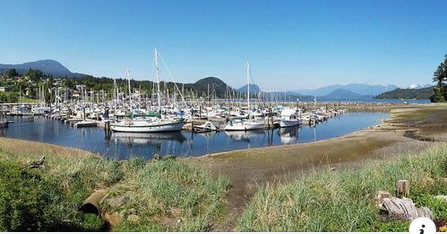No doubt there will be myriad claims (and promises) made by Nanaimo Council candidates in the next month leading up to the municipal election. But according to the author of today’s item, when we assess candidate views on certain issues we should not buy into the myth that local hands are tied. As the byline states, there are “things cities can do to reduce emissions (even if senior levels of government undercut their [efforts]).”
That’s important information for voters. For one thing, it points to the importance of including long term environmental and climate concerns in choosing municipal candidates. For another, it acknowledges that Victoria can and frequently does fiscally and authoritatively constrain municipalities like Nanaimo in their efforts to improve local situations.
Both factors provide voters with some important questions for those running for local office. Where do they place the priority of achieving long term environmental sustainability in their platforms? And … are they willing and exactly how will they work effectively around Victoria efforts to impede our taking local action to deal with all our local impacts?

Climate Fixes: How Local Governments Matter. The Tyee. September 19, 2022. “Here are three things cities can do to reduce emissions (even if senior levels of government undercut their gains).”
September 21, 2022 at 12:33 pm
Thanks for the note.
You may wish to notify your followers that they can find the attendance and voting records of all the candidates who are running again on the City’s web site. at:
https://www.nanaimo.ca/your-government/city-council/council-meetings/council-meeting-dashboard
When one gets the Cover notice, wait a moment and the search engine.will rise onto the screen. There are many parameters which can be questioned. Every citizen should be aware of this tool….
Ron
September 21, 2022 at 3:57 pm
Thanks Don. I’ve always disliked the “not our level of responsibility” claim. I believe that there will always be a workaround or a place for collaboration between levels of government when facing problems that affect everyone.
September 23, 2022 at 3:26 pm
There are many ways in which municipalities and the citizens who live in them can help to mitigate the impacts of climate change. One of my favourite books\projects is called Project Drawdown and the table I’ve linked below has a list of many different options. For example, reduction of food waste is number one in terms of CO2 reductions and this is something that we can all focus on in our day to day lives and cities can encourage in terms of programs to reduce disposal of food (a food bank is an example) in its area.
In my 30 plus years of learning about environmental and climate issues, my general conclusion is that humans need to reduce our consumption and truly look at what our needs are compared to our wants. Politicians are not always eager to look at that option as continued growth (often in terms of development) and the so-called economy are in their view as saviours.
https://drawdown.org/solutions/table-of-solutions
September 24, 2022 at 7:19 am
We can no longer afford to operate in an environmental deficit. That bill is coming due. We need to increase our parks and natural spaces to protect and enhance biodiversity and provide the values that we think of as our home place.
We need to increase our parks and protected spaces to provide us with critical infrastructure we rely on for stormwater management and to provide places to be cool and connected, to recreate. The past few years of COVID and heat domes have shown us the values of parks as places to get together safely and seek relief from extreme heat.
We need to expand our active transportation infrastructure by working for a connected network of sidewalks and other active transportation infrastructure.
Like with our means of transportation, we need to support low carbon buildings. Increased insulation and heatpumps may a big difference in our home and office carbon footprint. We need to get off the gas.
Climate change isn’t something that is happening somewhere else and not here. Extreme rainfall events, prolonged periods of dry and drought, extreme heat and the threat of wildfire are real, and they are here. As a climate resilient community, we need to continue to adapt to these changes by bolstering our natural places and systems. Ignoring the problem won’t make it go away. It will compound the problems and the cost of the solutions to all of our detriment.